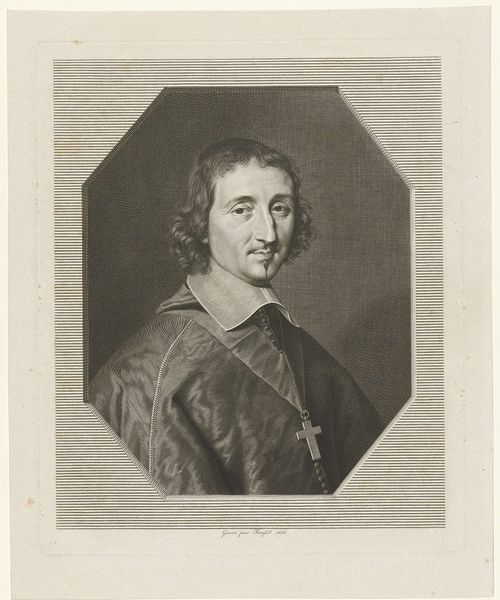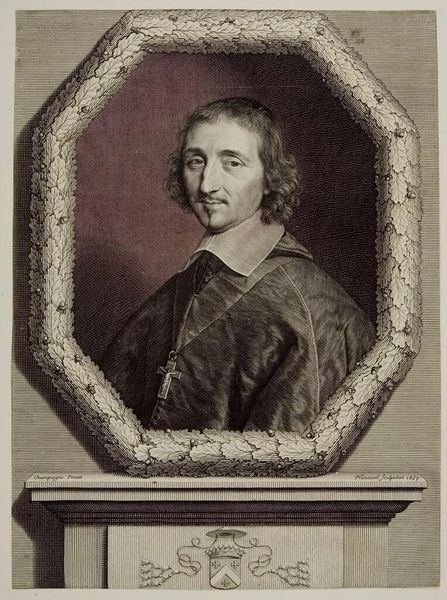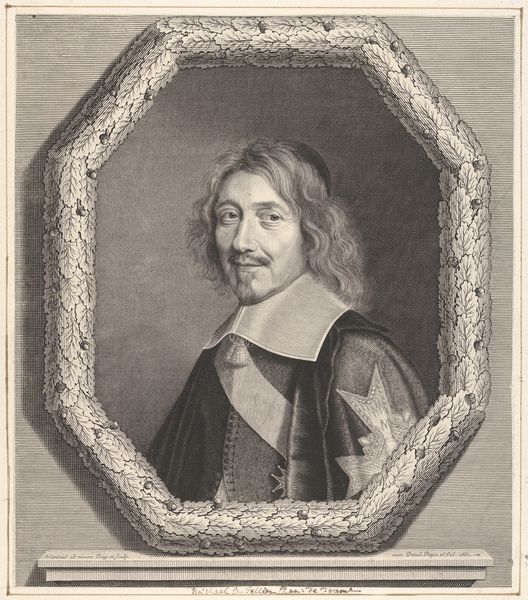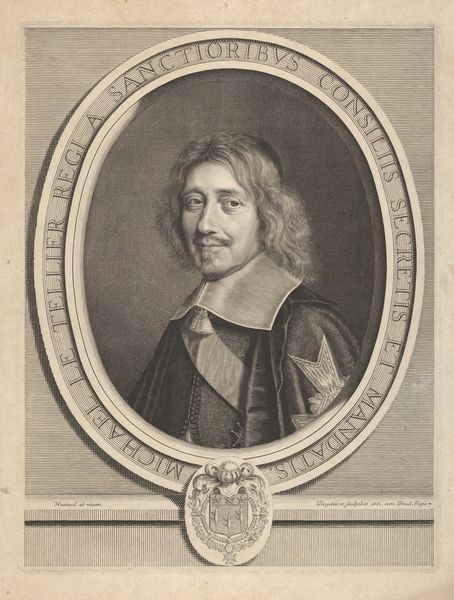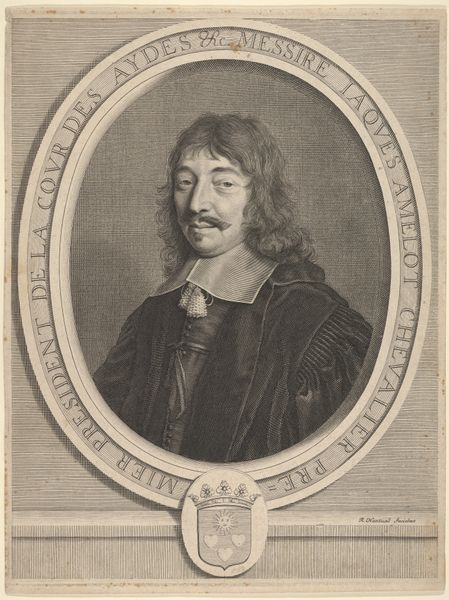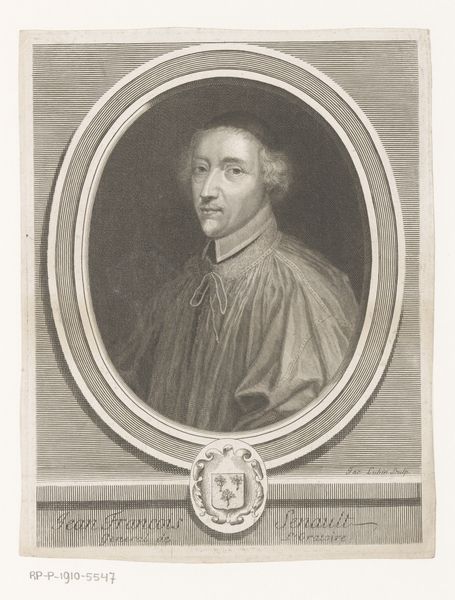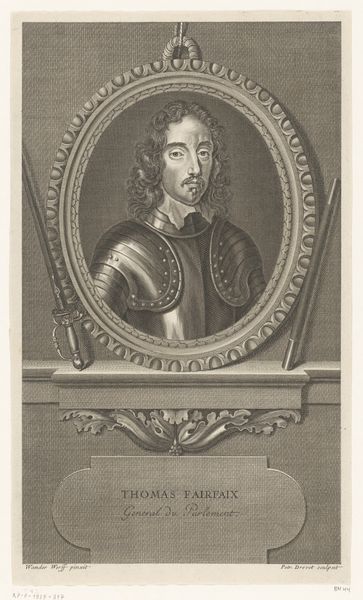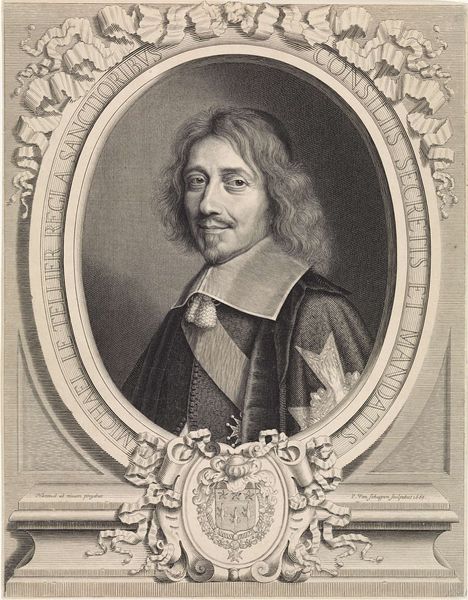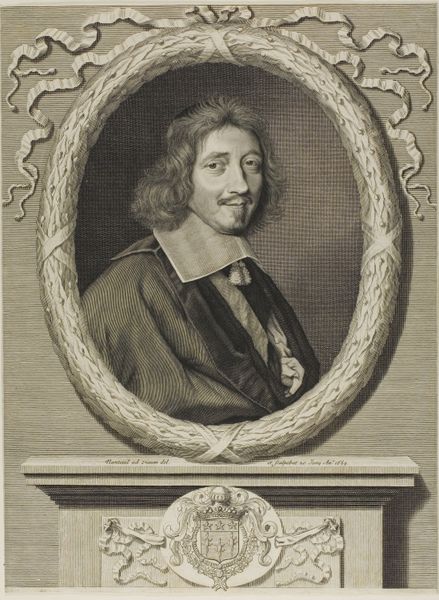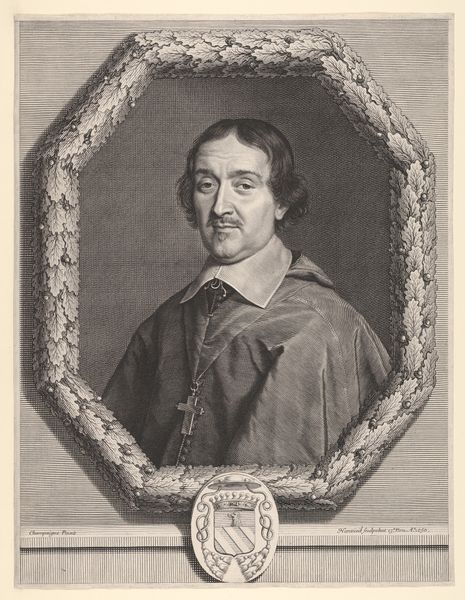
drawing, print, engraving
#
portrait
#
drawing
#
baroque
# print
#
history-painting
#
engraving
Dimensions: Sheet: 14 3/4 × 11 1/8 in. (37.4 × 28.2 cm) Plate: 14 3/16 × 10 9/16 in. (36 × 26.8 cm)
Copyright: Public Domain
Editor: This is "Ferdinand de Neufville," a print by Robert Nanteuil from 1658. It's quite a formal portrait, rendered meticulously in engraving. It has a very composed mood. I am struck by the frame surrounding the subject; it gives it the feel of official portraiture. What do you think about this piece? Curator: It's fascinating how Nanteuil uses the print medium to convey status and power in 17th-century France. Prints like this were crucial for disseminating images of important figures across society, shaping public perception. Think about it – before photography, how else would people visualize their leaders? Editor: So, these weren't just aesthetic objects, but almost a form of propaganda? Curator: Exactly! Consider the symbols: the ornate frame, the sitter’s attire signifying religious authority. Everything is carefully constructed to project a certain image, and this print, multiplied and distributed, reinforced that image within the social fabric. The sitter must have commissioned this to assert his identity within the social and political sphere. Do you agree? Editor: That makes a lot of sense. The level of detail does seem intended to impress. Also, I did not think about it being a reproduction shared in multiples and influencing public perception. Curator: Yes, it's less about individual artistic expression here, and more about the role of the image in a broader social and political context. Think of it as an early form of political branding! Editor: This has reshaped how I viewed the role of printed portraits in baroque era; it makes one consider power structures. Curator: Absolutely. It’s a reminder that art is always intertwined with the social forces of its time, even a seemingly straightforward portrait like this.
Comments
No comments
Be the first to comment and join the conversation on the ultimate creative platform.
